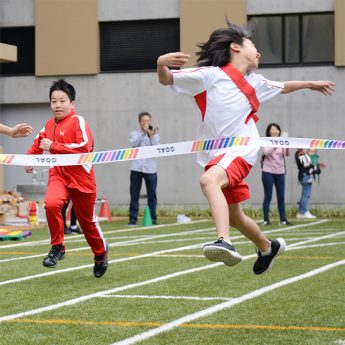- Concrete surfaces reflect pollen, exacerbating allergies
- Recent arrivals to Japan are unlikely to experience symptoms
- Many UK over-the-counter drugs require a prescription in Japan
Residents of Tokyo can be seen commuting in surgical facemasks year round, with individual reasons for this practice varying according to the season.
During spring, a number of people will be wearing masks in an attempt to mitigate the effects of pollen. Although hay fever is a global phenomenon, in Japan there are man-made factors at work that make it particularly severe.
In my medical practice, when I arrange for testing of patients with seasonal allergies, one of the most common results is a reaction to what is commonly known as Japanese cedar, or sugi (cryptomeria japonica). The timber of this tree was formerly a mainstay of the construction industry. It was planted widely after World War II, during the reconstruction of Japan.
However, between 1960 and 2000, the lower cost of imported timber undercut local suppliers’ prices, causing the proportion of domestic timber used in construction to fall from over 85% to under 20%.
As a result, many of the trees planted in the mid 20th century were allowed to grow past their intended harvest dates. This has led to areas of very dense sugi monoculture, with older trees that produce much more pollen. At the same time, the domestic forestry industry has contracted to the point where it lacks the manpower to manage the beast it created.
Residents of urban areas often struggle with the advice that they are experiencing symptoms caused by sugi pollen as they may never see a single offending tree during the whole allergy season.
However, tree pollen can travel great distances. When it finally falls to ground level in a city, it is likely to come into contact with a concrete surface.
Unlike landing on a patch of earth, where the pollen will mostly be absorbed, it simply blows off this hard material, bouncing around until it comes into contact with a surface to which it can stick, such as clothing or the membranes lining the nose.
Although there are other pollens from grasses and broadleaf trees that can cause allergic symptoms later in the year, by far the most cases of allergy occur during the sugi season.
Typically running from February to April, this period varies by location, starting earliest in the warmer west of Japan and latest in the colder north. Due to its impact, Japanese news channels give pollen levels a lot of coverage.
The good news for recent arrivals to Japan is that, as with most allergies, a period of sensitisation is needed for a reaction to sugi to develop. It is very unusual to suffer from this allergy in one’s first season here, but with each additional year, the risk of an allergic reaction rises.
My experience of long-term, non-Japanese residents is that, after about a decade of living in Japan, they suffer the same rate of sugi pollen allergy as Japanese people, with about 20% being affected.
Other than face masks, there are a number of options available for limiting pollen exposure and of mitigating its effects.
Many British residents of Japan would make a local pharmacy their first stop in search of help in dealing with hay fever. However, on doing this they are often surprised to find that many popular non-sedating allergy treatments (antihistamines) sold over the counter in the UK are only available with a doctor’s prescription.
Although older drugs can readily be purchased, they often make users very drowsy. This can result in many sufferers choosing to visit a local ear, nose and throat clinic in order to obtain antihistamines.
For those who do not want to take medication for the entire season of up to two months, air purifiers, sunglasses or even goggles and special clothing—designed to minimise the amount of pollen that is trapped—all may be of some help.
Yet, it is difficult to quantify the benefits. In medicine, a good general rule is that if there are many solutions to a particular problem, it is because no single one is effective enough to make all of the others redundant.







